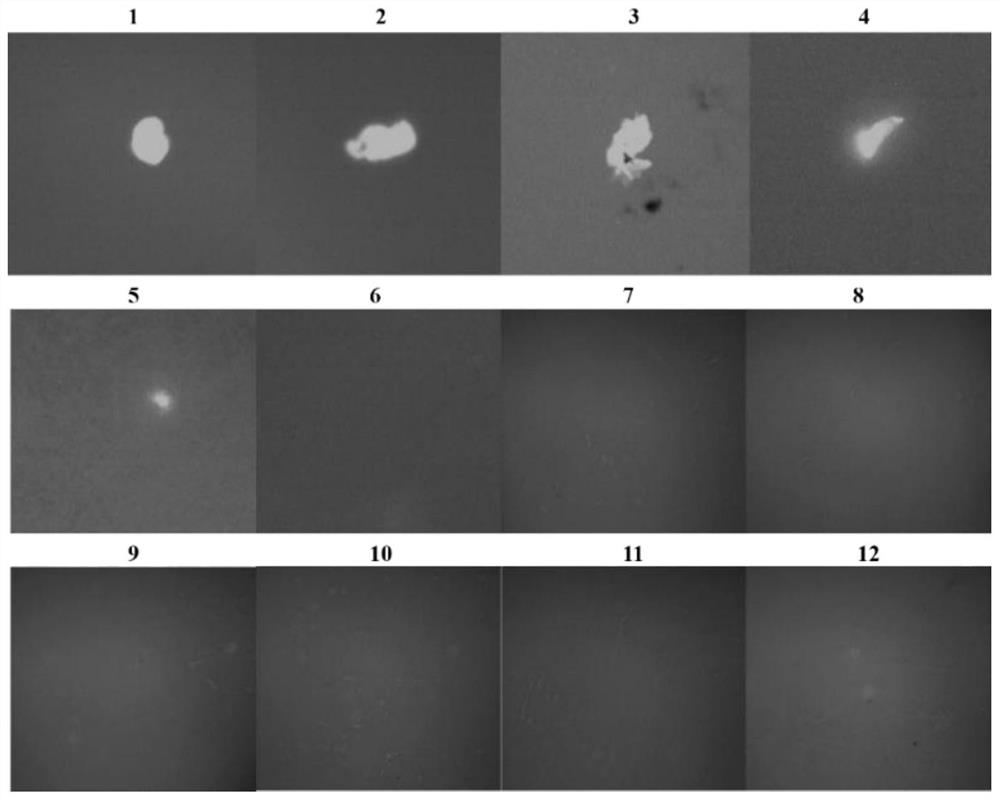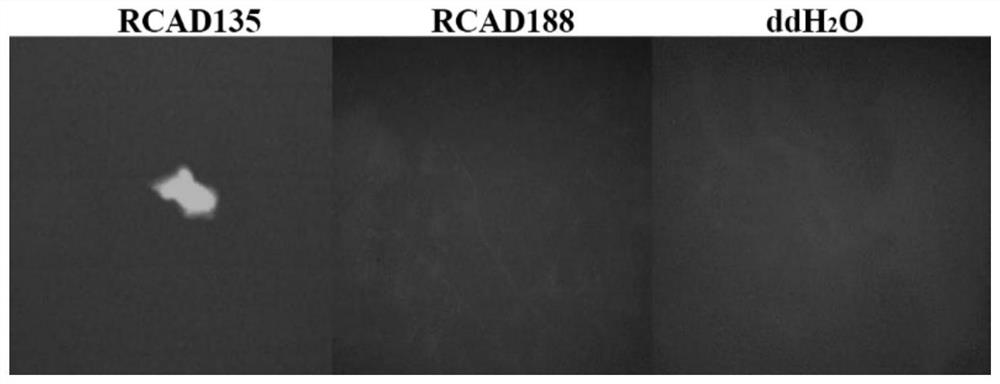Application and method of imp gene in preparation of kit for detecting Riemerella anatipestifer serotype 1
A technique for detecting Riemerella anatipestifer, which is applied in the field of livestock and poultry detection, can solve the problems of economic loss, time-consuming and laborious, and confusion of Escherichia coli and Pasteurella in the duck farming industry.
- Summary
- Abstract
- Description
- Claims
- Application Information
AI Technical Summary
Problems solved by technology
Method used
Image
Examples
Embodiment 1
[0022] Embodiment 1, the establishment of the method for detecting Riemerella anatipestifer serotype 1 by reverse hybridization with PNA probe
[0023] Design of primer pairs for specific amplification of Riemeria anatipestifer and PNA probes for specific hybridization of serotype 1 Riemeria anatipestifer: through bioinformatics analysis, found from the genomic DNA sequence of Riemeria anatipestifer Imp gene, Imp is highly conserved in other Gram-negative bacteria, and has a variety of important biological functions. In addition to participating in the process of lipopolysaccharide export and assembly to the outer membrane, it is also involved in the formation of the bacterial envelope and the tolerance of bacterial organic solvents related. It is used as the detection target gene of serotype 1 Riemerella anatipestifer, and the gene sequence is shown in SEQ ID NO.1.
[0024] (1) Primer and PNA probe design
[0025] According to the Imp gene sequence, primers with a product s...
Embodiment 2
[0044] Embodiment 2, PNA reverse hybridization detection method specificity evaluation experiment
[0045] According to the DNA template extraction method and the PNA probe reverse hybridization detection method in Implementation 1, Escherichia coli, Pasteurella, Salmonella, and multiple serotypes of Riemeria anatipestifer strains (preserved strains, unknown serotypes or serological Test to identify the serotype of Riemeria anatipestifer clinical isolates, as shown in Table 1) for detection.
[0046] For the detection results of the PNA probe reverse hybridization specificity experiment, see figure 1 And Table 1, only Riemerella anatipestifer serotype 1 appeared green fluorescent spots.
[0047] Table 1. PNA probe reverse hybridization specificity evaluation used strains and detection results
[0048] Strain number Deposit number or identified clinical isolates Strain name and serotype Test results RA CH-1 (RCH) CCTCC NO.M2017702 Riemerella anatipest...
Embodiment 3
[0050] Example 3, PNA reverse hybridization detection Riemerella anatipestifer serotype 1 sensitivity evaluation experiment
[0051] The initial concentration of the PNA probe was 50 μM, and the 2-fold gradient dilution was performed with sterile water, and a total of 10 gradients were diluted, and 2 μl was taken from each gradient for probe immobilization, and reverse hybridization detection was performed according to the steps in Example 1, as shown in figure 2 shown. Depend on figure 2 It can be seen that fluorescent spots can be seen in Figure 5 (corresponding to a PNA probe concentration of 3.1 μM), and clear fluorescent spots can be seen in Figure 4 (corresponding to a PNA probe concentration of 6.2 μM), which has extremely high sensitivity .
PUM
 Login to View More
Login to View More Abstract
Description
Claims
Application Information
 Login to View More
Login to View More - R&D
- Intellectual Property
- Life Sciences
- Materials
- Tech Scout
- Unparalleled Data Quality
- Higher Quality Content
- 60% Fewer Hallucinations
Browse by: Latest US Patents, China's latest patents, Technical Efficacy Thesaurus, Application Domain, Technology Topic, Popular Technical Reports.
© 2025 PatSnap. All rights reserved.Legal|Privacy policy|Modern Slavery Act Transparency Statement|Sitemap|About US| Contact US: help@patsnap.com



